It did not take long from the arrival of omicron in Hong Kong to the downfall of Hong Kong with its “zero Covid” obsession. In shocking scenes observed last week, on 15 February 2022, elderlies and mentally disabled COVID patients were left outdoors in cold weather as hospitals were full to capacity.
An absurd isolation policy
Before the arrival of omicron, Hong Kong had done a reasonable job of maintaining the city free of Covid for several months via a stringent quarantine regime which lasted up to 21 days.
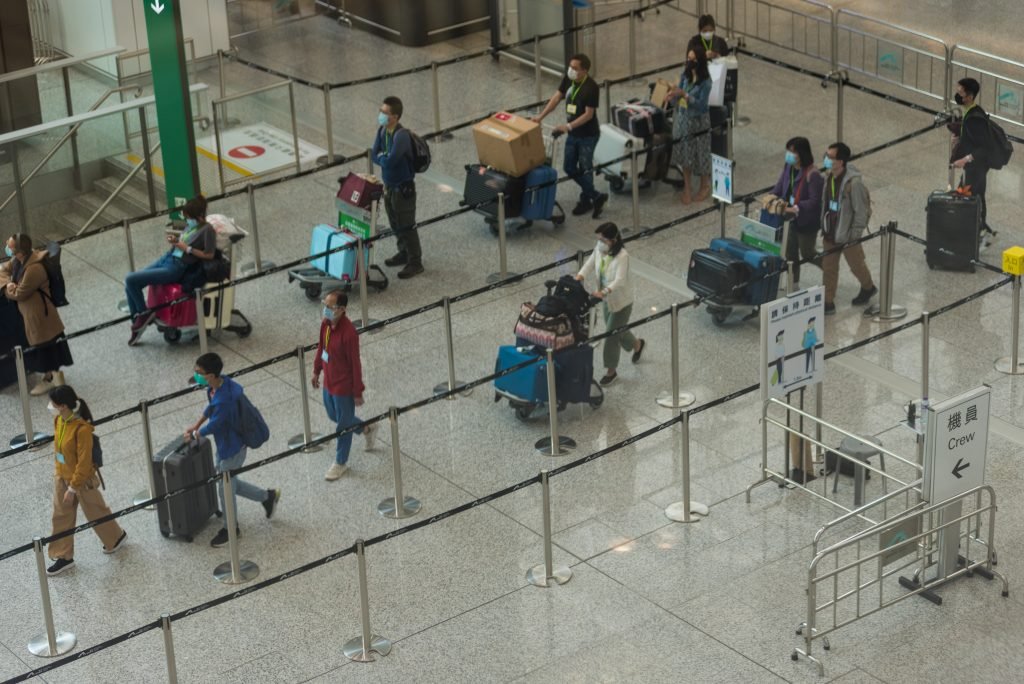
It even managed to organize a marathon in the streets of the city last October. The arrival of the extremely contagious omicron variant in January (due to a quarantine hotel) completely trumped this model, but the city failed to adapt timely to the new challenge.
In fact, under the current rules, anybody testing positive is supposed to be reporting themselves to the government for being locked up in an isolation facility. Under those rules, close contacts were also locked up for up to 21 days under the old policy leading to what a journalist described as “absurdities”.
It was thus all the more ironical that the current “fifth wave” originated in a quarantine hotel precisely because of the exaggerated duration of quarantine (the person being contaminated on the 19th day, which is the same day that the final test used to take place).
TESTING MANIA
At the start, Hong Kong addressed this by reusing the old playbook namely locking down and testing all buildings where a single case happened. This testing ended consuming precious resources in testing and manpower capacity, while the virus was already diffusing in the community.

Meanwhile, between all this “performative testing”, the virus continued extending its reach, and eventually reached the place where it would explosively develop: the Kwai Chung estates. A series of estates where people live with low income and tending to work near the airport was the place where the epidemic really took flight.
From contact tracing, it appeared that the virus was brought there by a relative of the “patient zero” originally infected in a quarantine hotel. Authorities were baffled as to the speed of the contamination in that estate, and quickly decided to lock down the whole estate complex. This thus triggered the first long-term lockdown of a building after the initial January 2021 lockdown of Yaumatei.
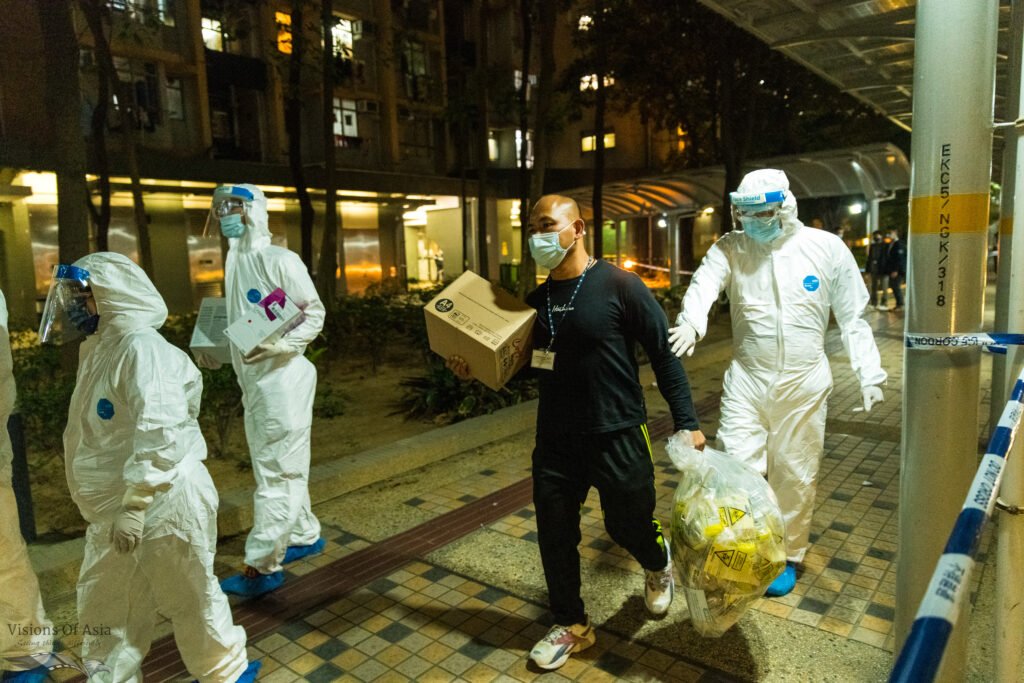
But it was already too late, as between the moment the lockdown was announced and the moment it was enforced a large number of residents went around in the city, many being seen returning with food supplies.
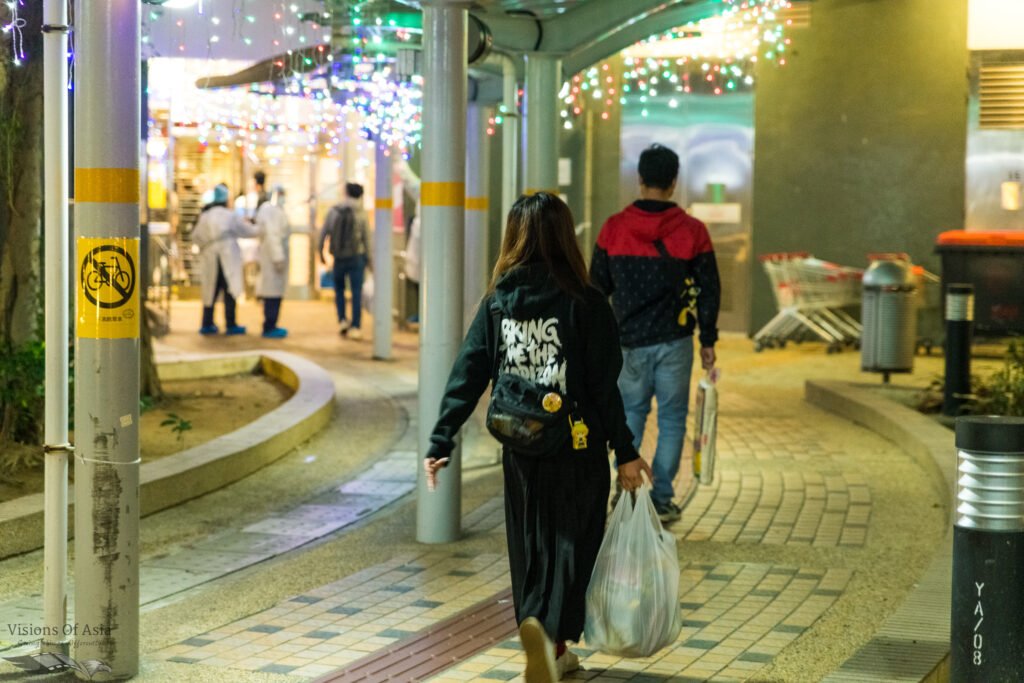
Immediately thereafter, the epidemic starting growing exponentially, and soon hospitals were overwhelmed by patients.
Dying outside
In a shocking reveal, the plight of COVID patients came to light on 15 February 2022, when the Caritas Medical Centre hospital, located in the poor area of Sham Shui Po was found to have several patients hosted outdoors on beds in the courtyard of the hospital.
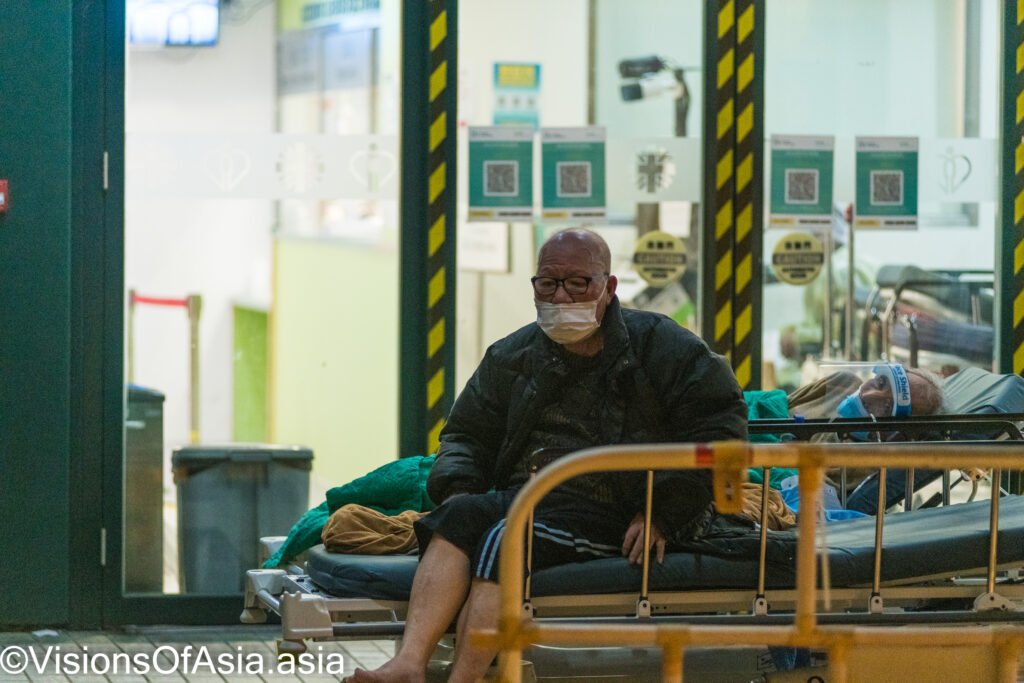
On that particular evening, as I visited the hospital, the rules were that any patient was supposed to be hospitalized, never mind the symptoms or the absence of these. As a result, they separated patients in two parts, with the more valid ones staying in a sort of tent complex on a former parking.

On the other side of this group, were the patients requiring more monitoring, often elderly or mentally disabled patients. That particular evening, temperatures were scheduled to fall to 15° C, and the fresher temperatures certainly proved a challenge for sick elderlies.

While elderlies were provided with blankets, most of the time, the disabled people were not. This was in the earlier days of the epidemic, so at those times, both those who needed treatment and those who did not were conglomerated together.



Meanwhile, patients kept coming into the hospital by taxi.
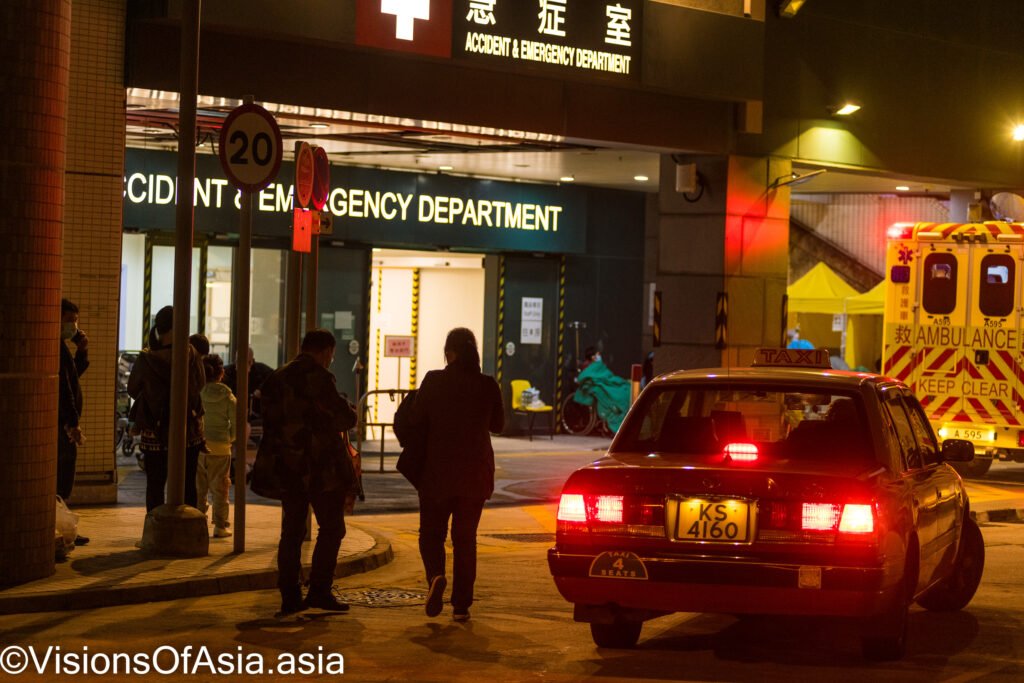
And a mother with child was also brought in.
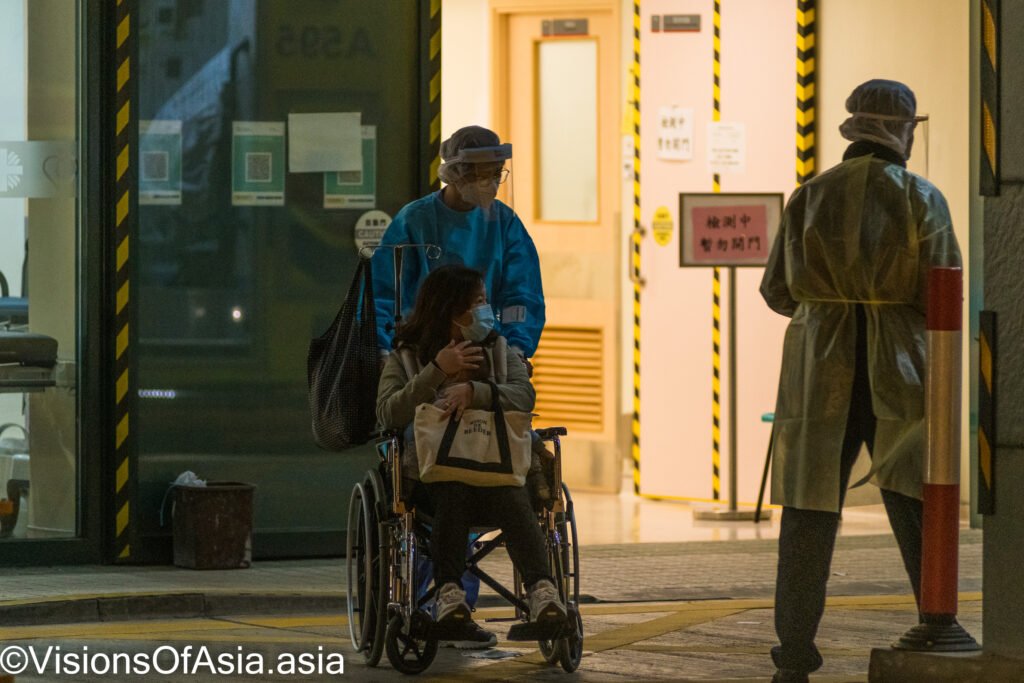
Overload
As weeks passed, the beginning of March saw a peak in contamination which also triggered a high number of deaths mainly among unvaccinated patients. About 200 to 300 deaths per day took place, partly due to overcrowding in the medical facilities. Nevertheless, by then, directives not to head to A&E (unless you were a person at risk) managed to reduce the overcrowding, so that on 4th March, the Caritas Medical Centre looked pretty much empty (although a few days before, they were throwing body bags under the tents).

This did not mean patients were not dying, far from there, as other hospitals such as United Christian Hospital in Kwun Tong also displayed signs of being overloaded with patients hosted outdoors on the very same night.

Elsewhere, patients in cardiac arrest were arriving at hospitals such as Queen Elisabeth hospital.
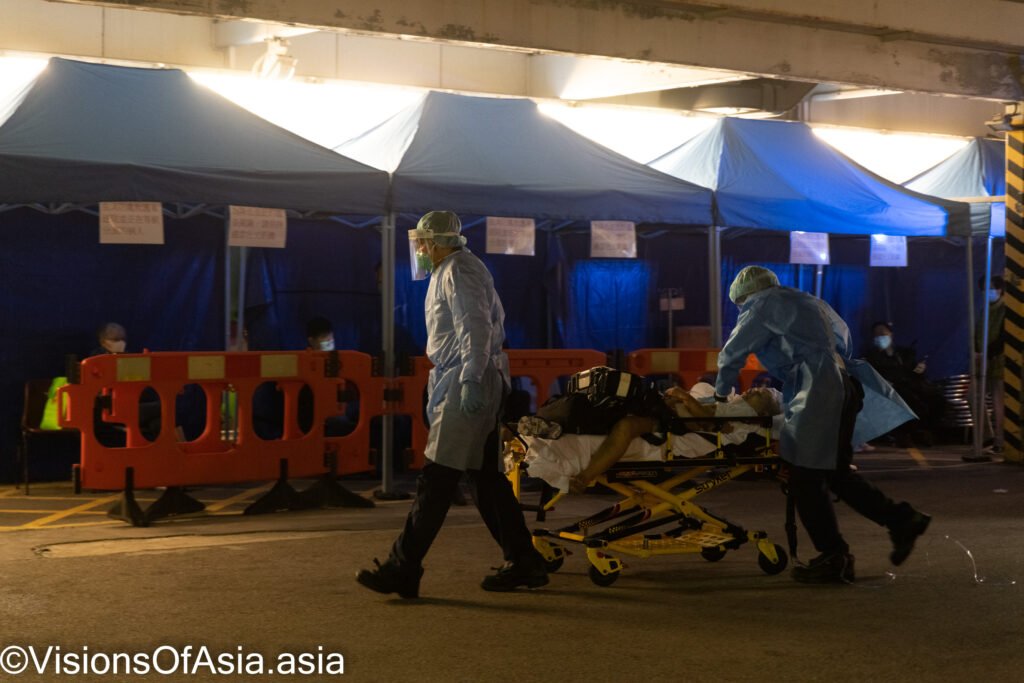
This all concurred to create a huge death toll that is now numbered to over 5,000 on 28th of March, with over 160 patients reported dead every single day.
Death, at least in the acute phase of the pandemic was most likely linked to failure to provide decent conditions for patients, with many of them exposed to difficult conditions in cold weather. Later, a number of patients were placed under oxygen, and another issue arose, with some patients running out of oxygen.
No vaccination
However, it is important to note that even in 80+ patients, the chances of survival were directly linked to vaccination. People without any vaccination had a 16% chance of dying and were a great part of the death toll of February and March 2022. The initial two-year success of the zero covid policy brought up the paradoxical result that the local population saw no incentive in getting vaccinated, since there were no cases in Hong Kong.
Despite this, in the midst of the omicron wave, some people still rejected vaccination for their elderly relatives. It was only when pushed in its retrenchments, that the Government decided to make the vaccination compulsory for patients of retirement homes (which, by then, provided the bulk of the patients of hospitals).

Fear aiding, the vaccination rate progressed by bounds and eventually the 70% level was overtaken.However, despite having a vaccine far better performing than Sinovac, most Hongkongers based their decision on the potential for side effects. It did not help that the HK government only reluctantly published those very figures about vaccine effectiveness and only after a local newspaper leaked them.
A warning for the future
While Hong Kong has serious governance and accountability issues, its lackluster performance is also a stark warning to all those countries abolishing social distancing and masking. As things go, we might be all setting ourselves up for continuous repeats of a disease which is quite nasty both in its working and effect on the population and also on its long-term consequences. Zero covid might be a target hard to obtain now, but totally “opening” as some countries are doing is not necessarily the wiser choice.

